|
Right whales are
a species of large baleen whales of the genus Eubalaena,
consisting of three species; the North Atlantic right whale (E. glacialis), the North Pacific right whale (E. japonica) and the southern right whale (E. australis). They are classified in the family Balaenidae with the bowhead whale. Right whales have rotund bodies with arching rostrums, V-shaped blowholes and dark gray or black skin. The most distinguishing feature of a right whale is the rough patches of skin on its head which appear white due to parasitism by whale lice. Right whales can grow up to 18 m (59 ft) long and weigh up to 100 short tons (91 t), significantly larger than humpbacks or grays, but smaller than blues. Male of this genus have genitals that are larger than those any other living animal.
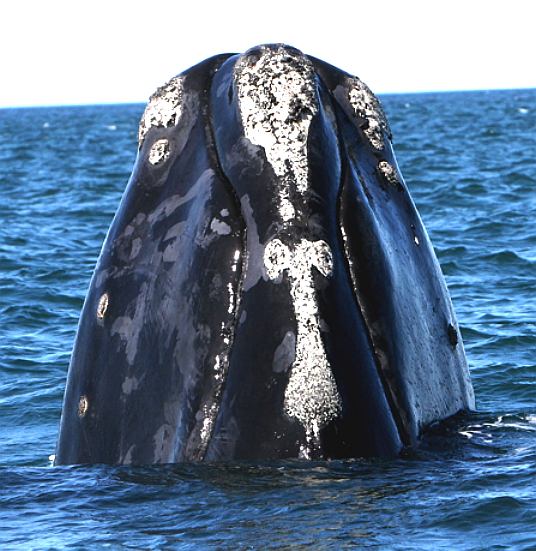
All three species are migratory, moving to certain areas to feed or give birth. The warm equatorial waters form a barrier that prevents mixing between the northern and southern groups. Right whales tend to avoid open waters and stay close to peninsulas and bays and on continental shelves, as these areas offer greater shelter and an abundance of their preferred foods. Right whales feed mainly on zooplankton but will also consume krill and pteropods. They may forage the surface, underwater or even on the ocean bottom. During courtship, males gather into large groups to compete for a single female. Sperm competition appears to be important in mating. Gestation tends to last a year and calves are born at 1 short ton (0.91 t) in weight and 4–6 m (13–20 ft) in length. Weaning occurs after eight months.
Because of their slow movements, buoyancy when killed and tendencies to stay close to the coast, right whales were common targets for
whalers who supposedly considered them the "right" whales to hunt. The North Atlantic and North Pacific species are endangered with the former numbering in the hundreds and the latter numbering less than 50. Both species are protected in the US by the Endangered Species Act. The southern right whale is more abundant, numbering in the thousands. In addition to whaling, right whales are threaten by entanglements in fishing nets and collisions with ships.
Whaling
Right whales were so named because early whalers considered them the "right" whale to hunt. In the early centuries of shore-based whaling before 1712, right whales were virtually the only catchable large whales, for three reasons:
-
They often swam close to shore where they could be spotted by beach lookouts, and hunted from beach-based whaleboats.
-
They are relatively slow swimmers, allowing whalers to catch up to them in their whaleboats.
-
Once killed by harpoons, they were more likely to float, and thus could be retrieved. However, some did sink when killed (10-30% in the North Pacific) and were lost unless they later stranded or
surfaced.
Basque people were the first to hunt right whales commercially, beginning as early as the 11th century in the Bay of Biscay. They initially sought oil, but as meat preservation technology improved, the animal was also used for food. Basque whalers reached eastern Canada by
1530 and the shores of Todos os Santos Bay (in Bahia, Brazil) by 1602. The last Basque voyages were made before the Seven Years' War (1756–1763). All attempts to revive the trade after the war failed. Basque shore whaling continued sporadically into the 19th century.
"Yankee whalers" from the new American colonies replaced the Basques. Setting out from Nantucket, Massachusetts and Long Island,
New York, they took up to 100 animals in good years. By 1750, the commercial hunt of the North Atlantic right whale was basically over. The Yankee whalers moved into the South Atlantic before the end of the 18th century. The southernmost Brazilian whaling station was established in 1796, in Imbituba. Over the next hundred years, Yankee whaling spread into the Southern and Pacific Oceans, where the Americans were joined by fleets from several
European nations. The beginning of the 20th century saw much greater industrialization of whaling, and the harvest grew rapidly. By 1937, there had been, according to whalers' records, 38,000 takes in the South Atlantic, 39,000 in the South Pacific, 1,300 in the Indian Ocean, and 15,000 in the North Pacific. The incompleteness of these records means the actual take was somewhat
higher.
As it became clear the stocks were nearly depleted, the world banned right whaling in 1937. The ban was largely successful, although violations continued for several decades. Madeira took its last two right whales in 1968. Japan took 23 Pacific right whales in the 1940s and more under scientific permit in the 1960s. Illegal whaling continued off the coast of Brazil for many years and the Imbituba land station processed right whales until 1973. The Soviet Union illegally took at least 3,212 southern right whales during the 1950s and '60s, although it reported taking only four.
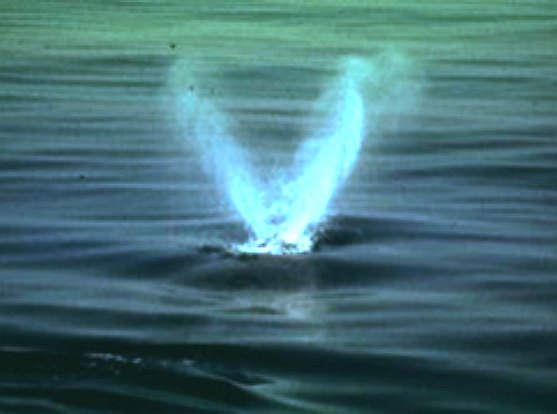
Both the North Atlantic and North Pacific species are listed as a "species threatened with extinction which [is] or may be affected by trade" (Appendix I) by CITES, and as "endangered" by the IUCN Red List. In the United States, the National Marine Fisheries Service (NMFS), a subagency of the National Oceanic and Atmospheric Administration (NOAA) has classified all three species as "endangered" under the Endangered Species Act. Under the Marine Mammal Protection Act, they are listed as
"depleted".
The southern right whale is listed as "endangered" under the Australian Environment Protection and Biodiversity Conservation Act, as "nationally endangered" under the New Zealand Threat Classification System, as a "natural monument" by the Argentine National Congress, and as a "State Natural Monument" under the Brazilian National Endangered Species
List.
The US and Brazil added new protections for right whales in the 2000s to address the two primary hazards. While environmental campaigners were, as reported in 2001, pleased about the plan's positive effects, they attempted to force the US government to do
more. In particular, they advocated 12 knots (22 km/h) speed limits for ships within 40 km (25 mi) of US ports in times of high right whale presence. Citing concerns about excessive trade disruption, it did not comply. The Defenders of Wildlife, the Humane Society of the United States and the Ocean Conservancy sued the NMFS in September 2005 for "failing to protect the critically endangered North Atlantic Right Whale, which the agency acknowledges is 'the rarest of all large whale species' and which federal agencies are required to protect by both the Marine Mammal Protection Act and the Endangered Species Act", demanding emergency protection
measures. According to NOAA researchers, about 83% of right whale sightings in the mid-Atlantic region occur within 20 nautical miles (37 km) of shore.
The southern right whale, listed as "endangered" by CITES and "lower risk - conservation dependent" by the IUCN, is protected in the jurisdictional waters of all countries with known breeding populations
(Argentina, Australia,
Brazil, Chile, New
Zealand, South Africa and
Uruguay). In Brazil, a federal Environmental Protection Area encompassing some 1,560 km2 (600 sq mi) and 130 km (81 mi) of coastline in Santa Catarina State was established in 2000 to protect the species' main breeding grounds in Brazil and promote whale
watching.
On February 6, 2006, NOAA proposed its Strategy to Reduce Ship Strikes to North Atlantic Right
Whales. The proposal, opposed by some shipping interests, limited ship speeds during calving season. The proposal was made official when on December 8, 2008, NOAA issued a press release that included the
following:
Effective January 2009, ships 65 feet (20 m) or longer are limited to 10 knots (19 km/h) in waters off New England when whales begin gathering in this area as part of their annual migration. The restriction extends to 20 nautical miles (37 km) around major mid-Atlantic ports.
The speed restriction applies in waters off New England and the southeastern US, where whales gather seasonally:-
-
Southeastern US from St. Augustine, Florida to Brunswick, Georgia from Nov 15 to April 15
-
Mid-Atlantic U.S. areas from Rhode Island to Georgia from Nov 1 to April 30.
-
Cape Cod Bay from Jan 1 to May 15
-
Off Race Point at the northern end of Cape Cod from March 1 to April 30
-
Great South Channel of New England from April 1 to July 31
Temporary voluntary speed limits in other areas or times when a group of three or more right whales is confirmed
Scientists will assess the rule's effectiveness before the rule expires in 2013.
The Stellwagen Bank area has implemented an autobuoy program to acoustically detect right whales in the Boston Approaches and notify mariners via the Right Whale Listening Network website.
Description
Unlike other whales, a right whale has distinctive callosities (roughened patches of skin) on its head, along with a broad back without a dorsal fin, occasionally with white belly patches, and a long, arching rostrum, or upper jaw, that begins above the eye. The callosities appear white due to large colonies of cyamids (whale
lice). Each individual has a unique callosities pattern. Right whales can grow up to 18 m (59 ft) long and weigh up to 100 short tons (91 t), significantly larger than humpbacks or grays, but smaller than blues. An unusually large 40% of their body weight is blubber, which is of relatively low density. Consequently, unlike many other species of whale, dead right whales
float. Right whales swim slowly, reaching only 5 kn (9.3 km/h) at top speed. However are highly acrobatic and frequently breach (jump clear of the sea surface), tail-slap and lobtail.
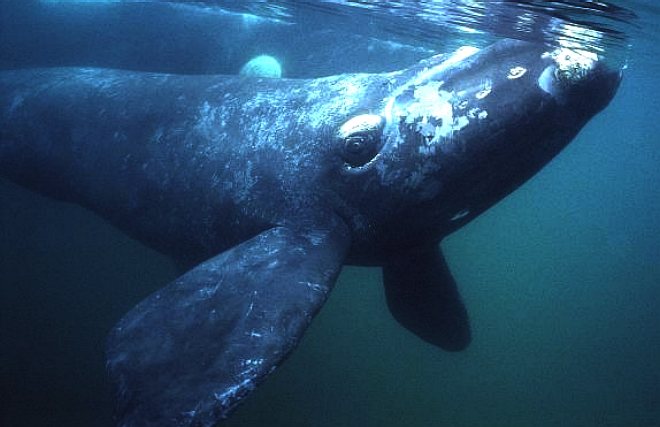
Anatomy
Adults may be between 11–18 m (36–59 ft) in length and typically weigh 60–80 short tons (54–73 t). The most typical lengths are 13–16 m (43–52
ft). The body is extremely thick with girth as much as 60% of total body length in some cases. The tail fluke is broad (up to 40% of body
length). The North Pacific species is on average the largest of the three species. The largest specimens may weigh 100 short tons (91
t). Right whales have a distinctive wide V-shaped blow, caused by the widely spaced blowholes on the top of the head. The blow rises 5 m (16 ft) above the
surface. Right whales have between 200 and 300 baleen plates on each side of their mouths. These are narrow and approximately 2 m (6.6 ft) long, and are covered in very thin hairs. The plates enable the whale to filter feed.
The penis on a right whale can be up to 2.7 m (8.9 ft) – the testes, at up to 2 m (6.6 ft) in length, 78 cm (2.56 ft) in diameter, and weighing up to 525 lb (238 kg), are also by far the largest of any animal on
Earth. The blue whale may be the largest animal on the planet, but the testicles of the right whale are actually ten times the size of those of the blue whale. They also exceed predictions in terms of relative size, as well – they are six times larger than would be expected on the basis of body mass. Together, the testicles make up nearly 1% of the right whale's total body weight. This strongly suggests sperm competition is important in mating, which correlates to the fact that right whales are highly promiscuous.
Taxonomy
Authorities have repeatedly recategorized the three populations of Eubalaena right whales, in one, two or three species. In the whaling era, they were thought to be a single species. Later, morphological factors such as differences in the skull shape of northern and southern animals indicated at least two species—one in the Northern Hemisphere, the other in the Southern
Ocean. Right whales are not thought to cross equatorial waters to make contact with the other (sub)species or
(inter)breed. A 2007 study by Churchill provided further evidence to conclude the three living right whale species do comprise a phylogenetic lineage, distinct from the bowhead, and are rightly classified into two separate genera.
Naming
A popular explanation for the name "right whales" is that they were the "right" ones to
hunt, as they float when killed and often swim within sight of shore. They are quite docile, and do not tend to shy away from approaching boats. As such, they were hunted nearly to extinction during the active years of the whaling industry. This origin is apocryphal. In his history of American whaling, Eric Jay Dolin writes: "Despite this highly plausible rationale, nobody actually knows how the right whale got its name. The earliest references to the right whale offer no indication why it was called that, and some who have studied the issue point out that the word 'right' in this context might just as likely be intended "to connote 'true' or 'proper,' meaning typical of the group.
Synonyms and common names
Due to their familiarity to whalers over a number of centuries, the right whales have had many names. These names were used throughout the world, reflecting the fact that only one species was recognized at the time. In his novel
Moby-Dick,
Herman Melville writes:
"Among the fishermen, the whale regularly hunted for oil is indiscriminately designated by all the following titles: The Whale; the Greenland whale; the black whale; the great whale; the true whale; the right whale."
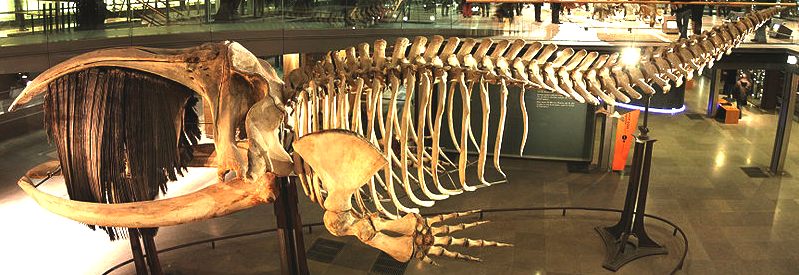
Courtship and reproduction
During the mating season, which can occur at any time in the North Atlantic, right whales gather into "surface-active groups" made up of as many as 20 males consorting a single female. The female has her belly to the surface while the males stroke her with their flippers or keep her underwater. The males do not compete as aggressively against each other as male humpbacks. The female may not become pregnant but she is still able to assess the condition of potential
mates. The mean age of first parturition in North Atlantic right whales is estimated at between
7.5 and 9 years. Females breed every 3–4 years. Both reproduction and calving take place during the winter
months. Calves are approximately 1 short ton (0.91 t) in weight and 4–6 m (13–20 ft) in length at birth following a gestation period of 1 year. The right whale grows rapidly in its first year, typically doubling in length. Weaning occurs after eight months to one year and the growth rate in later years is not well understood—it may be highly dependent on whether a calf stays with its mother for a second
year.
Lifespan
Very little is known about the life span of right whales. One of the few well-documented cases is of a female North Atlantic right whale that was photographed with a baby in 1935, then photographed again in 1959, 1980, 1985, and 1992. Consistent callosity patterns ensured it was the same animal. She was last photographed in 1995 with a seemingly fatal head wound, presumably from a
ship strike. By conservative estimates (e.g. she was a new mother who had just reached sexual maturity in 1935), she was nearly 70 years of age, if not older. Research on the closely related bowhead whale suggests this lifespan is not uncommon and may even be
exceeded.
Feeding and predation
The right whales' diets consist primarily of zooplankton, primarily the tiny crustaceans called copepods, as well as krill, and pteropods, although they are occasionally opportunistic feeders. As with other baleens, they feed by filtering prey from the water. They swim with an open mouth, filling it with water and prey. The whale then expels the water, using its baleen plates to retain the prey. Prey must occur in sufficient numbers to trigger the whale's interest, be large enough that the baleen plates can filter it, and be slow enough that it cannot
escape. The "skimming" may take place on the surface, underwater, or even at the ocean's bottom, indicated by mud occasionally observed on right whales'
bodies.
The right whales' three known predators are humans, orcas, and sharks. When danger lurks, a group of right whales may cluster into a circle, and thrash their outwards-pointing tails. They may also head for shallow water, which sometimes proves to be an ineffective defense. The sheer size of this animal is its best defense, although young calves are the most vulnerable to orca and shark
attacks.
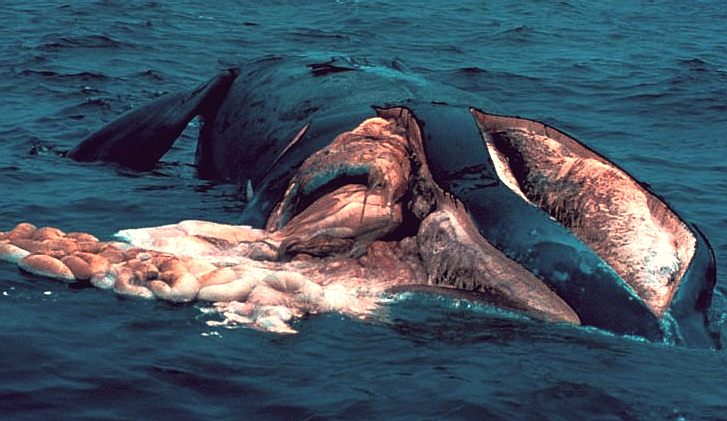
Range and habitat
The three Eubalaena species inhabit three distinct areas of the globe: the North Atlantic in the western Atlantic Ocean, the North Pacific in a band from Japan to Alaska and all areas of the Southern Ocean. The whales can only cope with the moderate temperatures found between 20 and 60 degrees in latitude. The warm equatorial waters form a barrier that prevents mixing between the northern and southern groups. Although the southern species in particular must travel across open ocean to reach its feeding grounds, the species is not considered to be pelagic. In general, they prefer to stay close to peninsulas and bays and on continental shelves, as these areas offer greater shelter and an abundance of their preferred
foods.
Because the oceans are so large, it is very difficult to accurately gauge whale population sizes.
Approximate figures:-
-
400 North Atlantic right whales (Eubalaena glacialis) live in the North Atlantic;
-
23 North Pacific right whales have been identified in the eastern North Pacific
(Eubalaena japonica) and
-
15,000 southern right whales
(Eubalaena australis) are spread throughout the southern part of the Southern Hemisphere.
North Atlantic right whale
Almost all of the 400 North Atlantic right whales live in the western North Atlantic Ocean. In northern spring, summer and autumn, they feed in areas off the Canadian and northeast U.S. coasts in a range stretching from New York to Nova Scotia. Particularly popular feeding areas are the Bay of Fundy and Cape Cod Bay. In winter, they head south towards Georgia and Florida to give
birth. There have been a smattering of sightings further east over the past few decades; several sightings were made close to Iceland in 2003. These are possibly the remains of a virtually extinct eastern Atlantic stock, but examination of old whalers' records suggests they are more likely to be
strays. However, a few sightings are regular between Norway, Ireland, Spain, Portugal, the Canary Islands and even
Italy and Sicily; at least the Norway individuals come from the Western
stock.
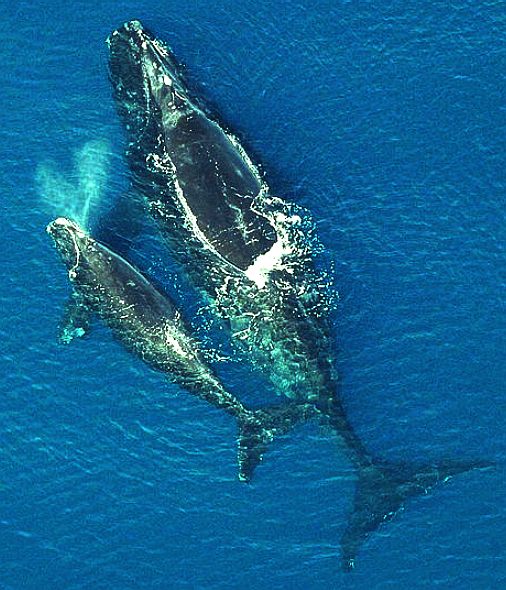
North Pacific right whale
The North Pacific right whale appears to occur in two populations. The population in the eastern North Pacific/Bering Sea is extremely low, numbering about 30
individuals. A larger western population of 100-200 appears to be surviving in the Sea of Okhotsk, but very little is known about this population. Thus, the two northern right whale species are the most endangered of all large whales and two of the most endangered animal species in the world. Based on current population density trends, both species are predicted to become extinct within 200
years. The Pacific species was historically found in summer from the Sea of Okhotsk in the west to the Gulf of Alaska in the east, generally north of 50°N. Today, sightings are very rare and generally occur in the mouth of the Sea of Okhotsk and in the eastern Bering Sea. Although this species is very likely to be migratory like the other two species, its movement patterns are not
known.
Southern right whale
The last major population review of southern right whales by the International Whaling Commission (IWC) was in 1998. Researchers used data about adult female populations from three surveys (one in each of Argentina, South Africa and Australia) and extrapolated to include unsurveyed areas and estimated counts of males and calves (using available male:female and adult:calf ratios), giving an estimated 1997 population of 7,500 animals. More recent data from 2007 indicate those survey areas have shown evidence of strong recovery, with a population approaching twice that of a decade earlier. However, other breeding populations are still very small, and data are insufficient to determine whether they, too, are
recovering.
The southern right whale spends the summer months in the far Southern Ocean feeding, probably close to Antarctica. It migrates north in winter for breeding, and can be seen around the coasts of
Argentina, Australia,
Brazil, Chile, Mozambique, New Zealand and
South Africa. Since hunting of the southern right whale ceased, stocks are estimated to have grown by 7% a year. The South American, South African and Australasian groups apparently intermix very little, if at all, because of the strong fidelity of mothers to their feeding and calving grounds. The mother passes these instincts to her
calves.
Vocalization and hearing
Vocalizations made by right whales are not elaborate compared to those made by other whale species. The whales make groans, pops and belches typically at frequencies around 500 Hz. The purpose of the sounds is not known but may be a form of communication between whales within the same group. Northern right whales responded to sounds similar to police sirens—sounds of much higher frequency than their own. On hearing the sounds, they moved rapidly to the surface. The research was of particular interest because northern rights ignore most sounds, including those of approaching boats. Researchers speculate this information may be useful in attempts to reduce the number of ship-whale collisions or to encourage the whales to surface for ease of harvesting.
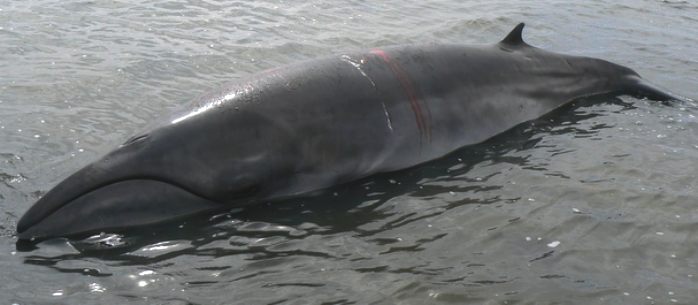
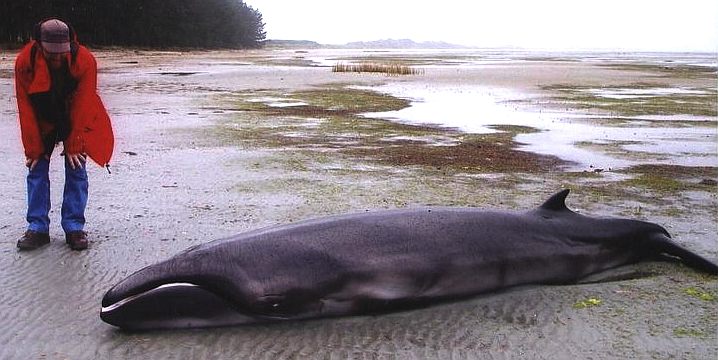
Beached
pygmy right whales
PYGMY RIGHT WHALE JAN 2013
The pygmy right whale is a small baleen whale found exclusively in waters of the Southern Ocean. Because it does not frequent shallow water and is of a size of no commercial value, it is little studied. It was first documented based on bones and baleen plates found during the 1839-1843 exploratory voyage of the HMS Erebus and the HMS Terror.
Due to its resemblance to the right whale, it was named the pygmy right whale (Balaena marginata). Further study resulted in it being placed in a new genus (Caperea), but the popular name remained unchanged. The scientific name refers to the wrinkled appearance of the ear bone and to the dark border around the baleen plates of some individuals. It is by far the smallest of the baleen whales, with adults having a length of about 20 feet and a weight of about 6,700 pounds. Unlike true right whales, the pygmy right whale lacks callosities. Its blow is also small and indistinct. The population is unknown.
Recent studies have led researchers to conclude that the pygmy right whale is the actually last living species of a family of whales known as cetotheres (scientific name – Neobalaenidae) previously thought to have gone extinct over two million years ago. The cetotheres branched off from the other baleen whales about 15 million years ago. Their fossils are found in all the world’s oceans. Much remains to be learned about these sole survivors.
http://www.maritimeprofessional.com/Blogs/Maritime-Musings/January-2013/Pygmy-right-whale.aspx
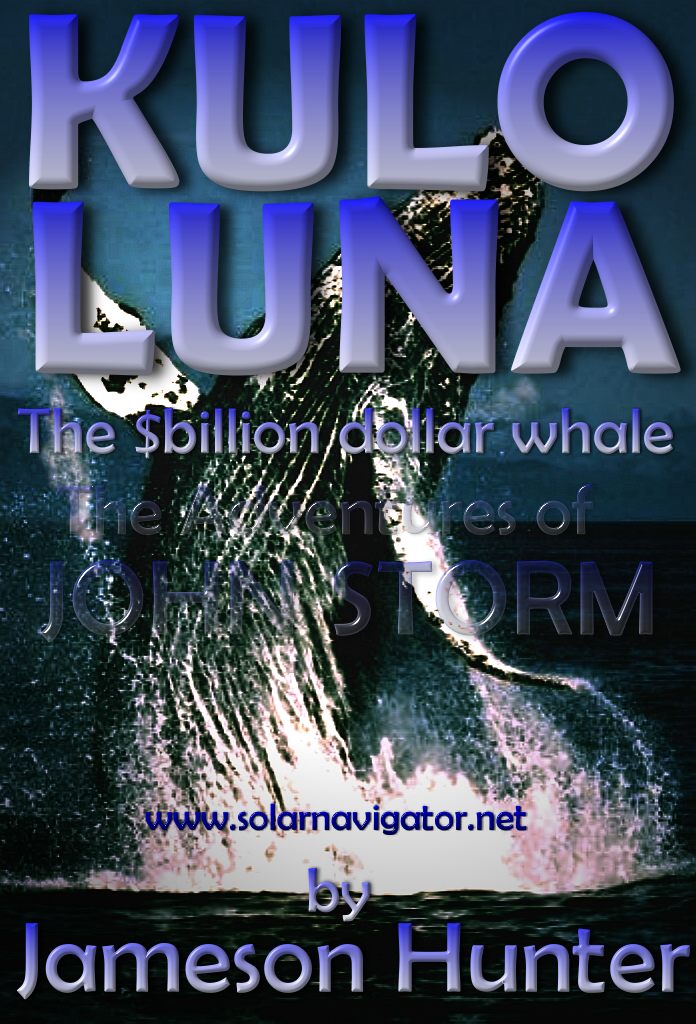

|







